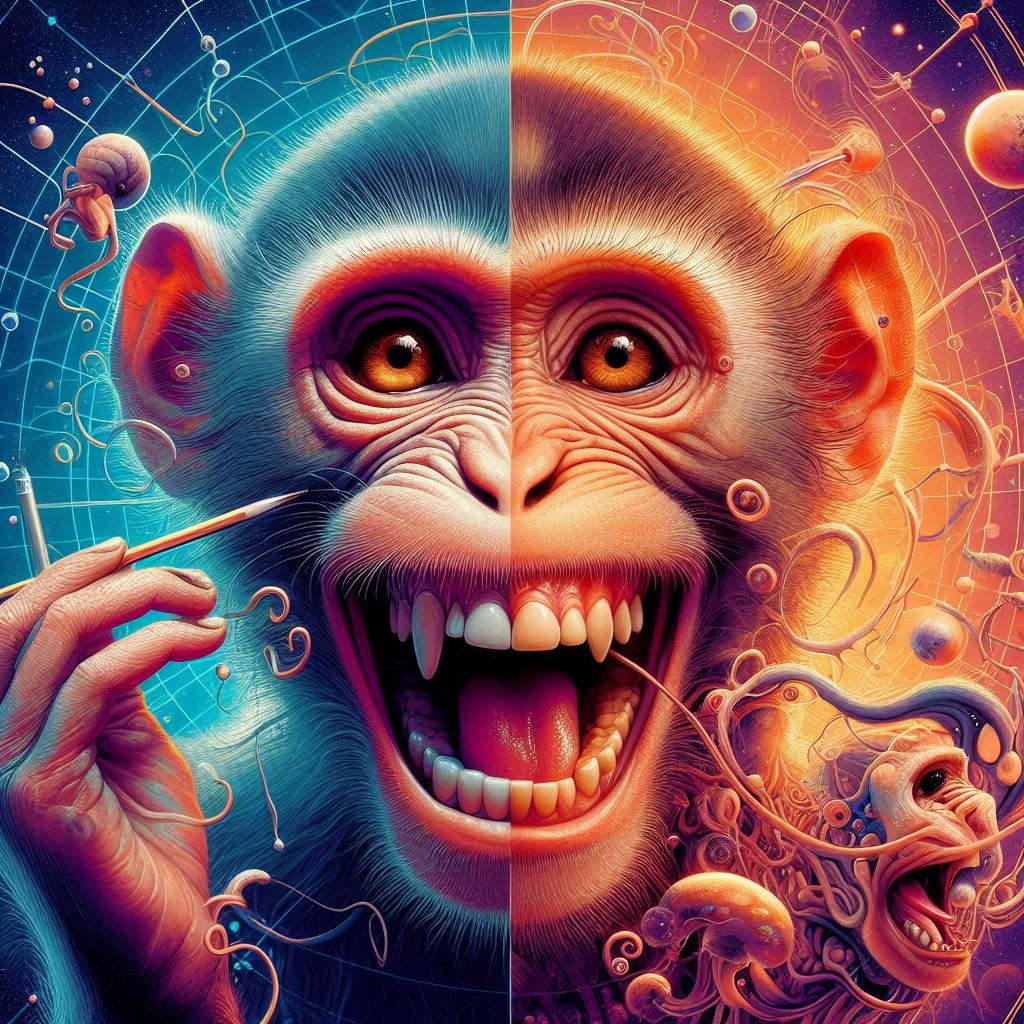
Do Monkeys Laugh? Understanding Their Playful Side
Share
Do Monkeys Laugh? Understanding Their Playful Side
Monkeys are known for their playful behavior, often seen swinging from trees, chasing each other around, and engaging in silly antics. But do they laugh like humans do? Do monkeys experience joy in a way that’s similar to us? In this blog post, we’ll explore the fascinating world of monkey laughter and their playful side, uncovering how these intelligent creatures express happiness and fun.
What is Laughter?
Before diving into the playful world of monkeys, it’s important to understand what laughter is. For humans, laughter is a physical response to stimuli that often reflects happiness, humor, or social bonding. It is typically accompanied by vocalizations, facial expressions, and body movements. While laughter is primarily seen as a human trait, many animals, including monkeys, display forms of laughter or laughter-like behavior. So, do monkeys laugh the same way we do?
Do Monkeys Laugh?
While monkeys don’t laugh exactly like humans, they do have their own unique ways of expressing joy and amusement. Some monkey species, particularly those that are closely related to humans, such as chimpanzees and bonobos, have been observed making vocalizations similar to human laughter. These vocalizations are often produced during playful interactions, especially during social activities like play fighting or chasing.
Chimpanzees, for example, produce a distinctive “panting” sound when they’re engaged in play. This sound is often compared to human laughter, as it’s emitted during moments of excitement, enjoyment, or interaction with others. While it’s not the same as a human’s belly laugh, it serves a similar function in social bonding and communication.
The Science Behind Monkey Laughter
The concept of laughter in animals was first explored by Charles Darwin in the 19th century. He noted that some primates, like chimpanzees and gorillas, produced vocalizations that seemed to correspond with play and positive emotions. These vocalizations were later found to be the result of a particular neural activity associated with enjoyment and amusement.
In studies involving chimpanzees, researchers discovered that when the animals playfully interact, their laughter-like sounds are linked to their body language, such as tickling or playful chasing. The vocalizations often mimic human laughter in tone, pitch, and rhythm, leading scientists to believe that these vocalizations have a social function, much like human laughter. These sounds help the monkeys communicate with one another, signaling that they are playing and not engaging in aggression or other hostile behaviors.
Do All Monkeys Laugh?
Not all monkeys make vocalizations that resemble human laughter. However, many primate species display behaviors that are indicative of playfulness and joy. For example, young monkeys, especially in species like macaques and capuchins, engage in rough-and-tumble play, often rolling on the ground or chasing each other around. While they may not make the same “laughter” sounds as chimpanzees, their actions and interactions are clearly expressions of fun and joy.
Some monkey species also engage in social grooming or other playful activities, which are accompanied by vocalizations that reflect positive emotions. These behaviors help strengthen bonds within the group, promoting cooperation and social cohesion.
The Importance of Play in Monkey Development
Play is an essential part of monkey development. Young monkeys engage in play as a way to practice important survival skills, such as coordination, agility, and social interaction. During play, they learn how to interact with others, establish dominance, and understand social cues. It also helps them develop problem-solving abilities and enhance their cognitive skills.
For adult monkeys, play serves as a way to relieve stress and maintain social bonds within the group. It’s also a form of communication that helps them interact with others in a non-aggressive manner. Playful interactions, such as tickling or chasing, are often used to demonstrate trust and mutual respect.
How Play and Laughter Benefit Monkey Social Structure
Play and laughter in monkeys aren’t just about having fun—they’re crucial for maintaining the social structure of the group. When monkeys engage in playful activities, they’re reinforcing relationships with other group members. This is particularly important in species with complex social structures, like baboons, macaques, and capuchins.
In these species, play serves as a way to establish alliances and resolve conflicts. Monkeys that play together are more likely to form strong bonds and cooperate in various tasks, such as finding food or protecting the group from predators. Play also helps to diffuse tensions within the group, preventing aggression and promoting harmony.
How Do Monkeys Show Joy?
Aside from vocalizations that resemble laughter, monkeys show joy in other ways. For example, they may display excited facial expressions, such as wide-open eyes or a relaxed mouth, when they’re engaged in play. Some monkeys, like capuchins, may even jump or perform acrobatic feats as a sign of happiness.
Additionally, play behaviors such as chasing, tickling, and roughhousing are clear indicators of joy. These behaviors are often accompanied by other positive signals, like body postures that indicate friendliness and relaxation.
What About Other Animals?
Monkeys aren’t the only animals to show playful behavior and laughter-like vocalizations. Many other species, including dolphins, dogs, and even rats, display similar behaviors. These animals engage in play to develop social bonds, enhance cognitive abilities, and promote overall well-being.
In fact, laughter-like sounds have been documented in a variety of non-human primates, from orangutans to lemurs. Researchers continue to study how animals communicate through laughter and play, furthering our understanding of the emotional lives of animals.
Conclusion: The Playful World of Monkeys
While monkeys don’t laugh exactly like humans, they certainly have their own ways of expressing joy and amusement. Through vocalizations, body language, and playful interactions, monkeys communicate with one another and strengthen their social bonds. Play is essential for their development, social cohesion, and overall well-being.
So, the next time you see a group of monkeys engaging in playful antics, remember that their laughter-like vocalizations are a sign of their emotional depth and social intelligence. These charming creatures remind us that play is not just for humans—it’s a vital part of life for all social animals.
Want to learn more about animal behaviors and fun facts? Check out:
